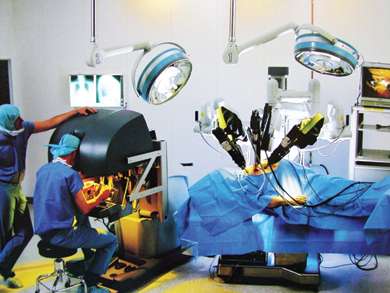
Have you imagined yourself lazily lying on bed, ordering your robot to bring breakfast? Today, thanks to the rapid development of technology as well as increased public interest in robots, a world in which humans and robots co-exist is no longer a fantasy. Robotics experts say that they are already developing the technological and social systems needed to make the age of robots a reality.
“As many people have become interested in robots, sponsors and government support have increased significantly, making it easier for scientists to research in a better environment,” says Professor Lee Ju-jang, head of the Korea Advanced Institute of Science and Technology (KAIST) robotics program. According to Lee, the fast adoption of new technologies such as computers provided the foundation for
Lee started to develop different kinds of robots such as industrial robots used in automobile companies, Selective Compliance Assembly Robot Arm (SCARA) type of robots which are able to bend its body and convey objects easily and also educational. Now with the support from the Ministry of Health and Welfare, Lee is nearly finished with a three-year project called the Intelligent Bed Robot System (IBRS), a special bed equipped with a robot manipulator, designed to help the elderly and people with disabilities. “If this kind of research continues, we will be living in a welfare-driven society where the elderly and the disabled would lead their lives happily,” says Lee.
Professor Lee Beom-hee (
Some people are also concerned about the negative influences that robots may have, such as the possibility for humanoid robots to replace people. But researchers are also working on a system of social ruler for robots to try to avoid such problems. “In Japan, in order to deal with possible problems in the future, we enacted a constitution for robots, containing guidelines and rules for robot stability and security system,” says Professor Masanori Sugisaka (Oita University), a specialist in intelligent robotics as well as the editor-in-chief of the journal Artificial Life and Robotics, in an interview on the EBS television program Knowledge Forefront. “We made this constitution to avoid the possibility of robots causing problems for the humans and to maintain a stable social framework in the future.
Ju-jang Lee from KAIST agrees, and says, “Some people worry that we might be dominated by robots in the future, but I believe this is caused by their over-active imagination. Instead of worrying about such things, we have to focus on the idea that in order for people to enjoy a ubiquitous robotic era, continual attention and support from government and the people are necessary.”

